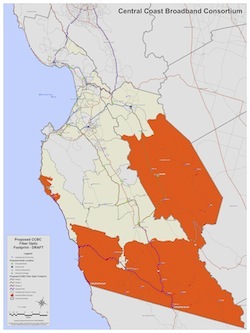The purpose of the California Advanced Services Fund (CASF) is providing Internet service to homes and businesses. Key measures used to evaluate grant and loan applications include the number of households served and the number of new subscribers expected. As a result, funding middle mile projects through CASF is a challenge. In its recent decision revising the CASF program, the California Public Utilities Commission was adamant: it would not support “middle mile to nowhere” projects.
A middle mile project that spans under and unserved areas (as defined by the CPUC), and even served areas, is eligible for CASF funding, however it will be judged using the same criteria as a last mile project. In other words, a middle mile project has to be an integral part of a last mile service plan and be “indispensable” to reaching under and unserved communities.
The level of funding for a middle mile project also depends on the mix of areas that it serves. The CPUC will pay for up to 60% of a project in an underserved area through CASF grants, and up to 70% for an unserver area. Loans can cover up to another 20% of the cost. But if an area is served – in other words, service of at least 6 mbps down and 1.5 mbps up is available – no CASF money at all can go towards it. That means that costs relating to served areas have to subtracted out completely and the remainder prorated.
For example, if the total cost of a project is $3 million, with $1 million being spent on each type of area, the maximum grant would be $1.3 million: $700,000 for the unserved area (70% of $1 million), $600,000 for the underserved area (60%) and nothing for the served area.
A summary of CASF program requirements and mapping information regarding which areas of California the CPUC considers to be under and unserved is available here. The deadline for proposals to build in unserved areas is 15 May 2012, and 11 September 2012 for projects that include underserved areas.

